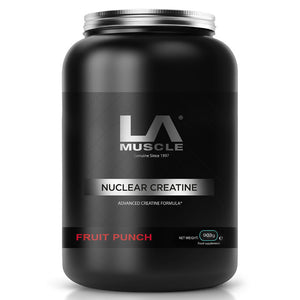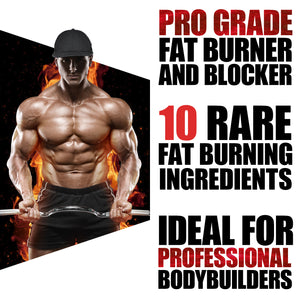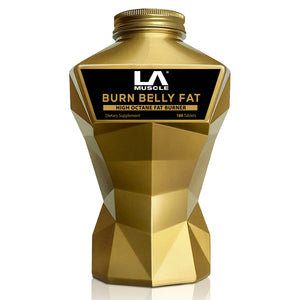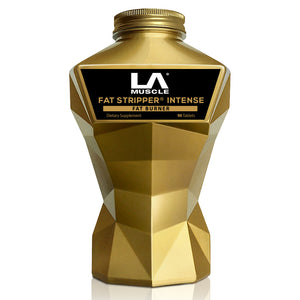Building strength to become a bench press champion is a journey that involves dedication, a strategic approach to training, and proper nutrition. The bench press is one of the most revered lifts in strength sports, testing both upper body strength and mental toughness. Whether you're a beginner or an intermediate lifter, this guide will help you develop a comprehensive plan to maximise your bench press potential.
1. Understanding the Bench Press
The bench press is a compound movement that primarily targets the pectoral muscles (chest), deltoids (shoulders), and triceps. It's not just about brute strength; technique, stability, and muscular endurance all play vital roles in executing a powerful lift.
2. Structuring Your Training Program
To become a bench press champion, you need a well-structured training program that progressively overloads your muscles and promotes recovery. Here's a breakdown of the key components:
A. Foundation Phase (8-12 weeks)Focus: Build a solid base of strength and technique.
- Frequency: 3 times per week
-
Exercises:
- Barbell Bench Press: 4 sets of 5-8 reps
- Incline Bench Press: 3 sets of 6-8 reps
- Close-Grip Bench Press: 3 sets of 6-8 reps
- Dumbbell Flyes: 3 sets of 8-12 reps
- Tricep Pushdowns: 3 sets of 10-15 reps
- Face Pulls: 3 sets of 12-15 reps
- Rest: 2-3 minutes between sets
This phase aims to strengthen the muscles involved in the bench press and improve technique. Focus on maintaining proper form and controlling the bar path.
B. Strength Phase (8-10 weeks)Focus: Increase overall strength and power.
- Frequency: 2-3 times per week
-
Exercises:
- Barbell Bench Press: 5 sets of 3-5 reps
- Paused Bench Press: 4 sets of 3-5 reps (pause 1-2 seconds on the chest)
- Board Press or Pin Press: 3 sets of 4-6 reps
- Overhead Press: 4 sets of 6-8 reps
- Dumbbell Rows: 4 sets of 8-12 reps
- Skull Crushers: 3 sets of 8-12 reps
- Rest: 3-4 minutes between sets
This phase focuses on lifting heavier weights to build maximum strength. The paused bench press and board press help develop explosive power off the chest and lockout strength.
C. Peaking Phase (4-6 weeks)Focus: Maximise strength and prepare for competition.
- Frequency: 1-2 times per week
-
Exercises:
- Barbell Bench Press: 3-5 sets of 1-3 reps
- Chain or Band Bench Press: 3 sets of 1-3 reps
- Spoto Press: 3 sets of 2-4 reps
- Tricep Dips (Weighted): 3 sets of 6-10 reps
- Lat Pulldowns or Pull-Ups: 4 sets of 6-10 reps
- Face Pulls: 3 sets of 12-15 reps
- Rest: 3-5 minutes between sets
This phase focuses on lifting near-maximal weights to condition the body and nervous system for the heaviest lifts. Chain or band presses help build strength through different portions of the lift, while the Spoto Press emphasises control and tension.
3. Secret Methods to Boost Your Bench Press
To further enhance your bench press, incorporate these secret methods into your training:
A. Incorporate Speed WorkSpeed work involves lifting lighter weights (50-60% of your 1RM) with maximum explosiveness. This improves your rate of force development, which is crucial for overcoming the sticking point in the bench press.
- Exercise: Dynamic Bench Press
- Sets/Reps: 8-10 sets of 2-3 reps
- Rest: 45-60 seconds between sets
Accommodating resistance (bands or chains) changes the resistance throughout the range of motion, challenging the muscles differently and improving lockout strength.
- Exercise: Band or Chain Bench Press
- Sets/Reps: 3-4 sets of 3-5 reps
Identify your weak points (e.g., bottom, mid-range, or lockout) and use specialized exercises to strengthen them. For example, use paused bench presses for the bottom, Spoto presses for mid-range, and board presses for lockout.
D. Focus on TechniquePerfecting your form is crucial. Keep your feet planted, arch your back slightly, retract your shoulder blades, and maintain a consistent bar path. Consider working with a coach or recording your lifts to identify areas for improvement.
4. Diet for a Bench Press Champion
Diet plays a significant role in building muscle and strength. Here’s a general guideline:
- Caloric Intake: Aim for a slight caloric surplus to fuel muscle growth and recovery.
- Protein: Consume 1.2-1.6 grams of protein per pound of body weight. Focus on lean meats, fish, eggs, dairy, legumes, and protein supplements.
- Carbohydrates: Prioritize complex carbs (rice, oats, quinoa, sweet potatoes) for sustained energy and recovery. Aim for 2-3 grams per pound of body weight.
- Fats: Include healthy fats (avocados, nuts, seeds, olive oil) for hormone production and joint health. Aim for 0.3-0.5 grams per pound of body weight.
- Hydration: Drink plenty of water throughout the day, especially during training sessions.
Consider supplements like creatine, whey protein, and beta-alanine to enhance performance and recovery.
5. Rest and Recovery
Rest and recovery are just as crucial as training for building strength:
- Sleep: Aim for 7-9 hours of quality sleep per night. Sleep is when your body repairs and grows stronger.
- Active Recovery: Incorporate light activities like walking, stretching, or yoga on rest days to promote blood flow and recovery.
- Deload Weeks: Every 6-8 weeks, reduce the intensity and volume of your training to allow your body to recover and prevent burnout.
6. Tracking Progress and Adjustments
Keep a training log to track your workouts, sets, reps, and weights lifted. Regularly assess your progress and make adjustments to your program if needed. As you advance, consider working with a coach or joining a powerlifting community to stay motivated and gain insights.
Becoming a bench press champion requires a combination of intelligent programming, technique refinement, proper nutrition, and recovery strategies. By following this guide and staying committed to your goals, you'll gradually build the strength and confidence needed to dominate the bench press. Remember, consistency is key, and progress takes time—stay focused, stay strong, and lift heavy!
To build the ultimate strength, try any of the Norateen muscle builders such as Norateen Extreme, Norateen X or Norateen XXX.



























